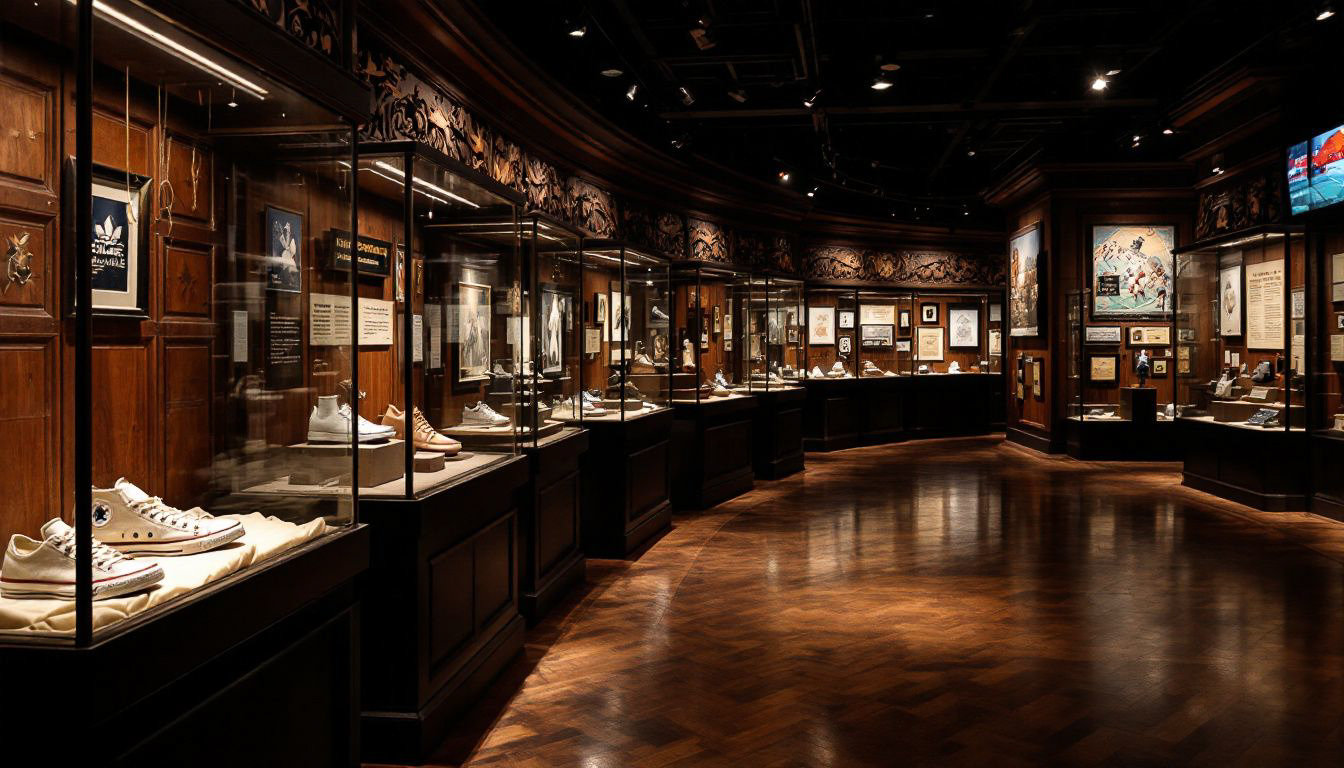Sneakers have evolved remarkably since their inception in the 1800s, transforming from simple rubber-soled footwear designed for quiet performance to one of our most significant cultural and fashion symbols. From the rudimentary plimsolls to high-tech modern sneakers, this article explores the rich history and the milestones that have marked the transformation of sneakers over the decades.
Early Beginnings: The Plimsolls of the 1800s
The history of sneakers dates back to the early 19th century with the advent of plimsolls, the first rubber-soled shoes. At a time when most footwear featured hard leather soles, the introduction of plimsolls marked a significant innovation. Their design, with a canvas upper attached to a rubber sole, made them lightweight and more flexible than traditional shoes. Plimsolls were initially used for sporting activities and seaside excursions, offering fresh air in comfort and functionality.
As industrialization progressed, plimsolls became accessible to a broader audience. The growth of leisure activities and the demand for comfortable footwear increased adoption. The name “plimsoll” actually comes from the plimsoll line on a ship’s hull, which is similar to the shoe’s visible line where the upper meets the sole.
The Rise of Athletic Sneakers: The Early 20th Century
The early 20th century saw major advancements in sneaker technology and design, primarily fueled by the increased popularity of sports. Companies such as Converse and Goodyear entered the fray, producing some of the first athletic-specific sneakers. Converse’s All-Star basketball shoe, released in 1917, became an iconic model and set a precedent for sneakers as sportswear.
Adidas and Puma, two of the most influential brands in sneaker history, emerged from Germany during this period. Both companies were founded by the Dassler brothers, who initially worked together before parting ways due to personal disagreements. They innovated by adding features like spikes to their shoes, which provided athletes with better grip and performance during competitive events. Such technological improvements positioned sneakers as essential to an athlete’s gear.
Mid-Century and Cultural Integration: 1950s-1970s
By the mid-20th century, sneakers began integrating with broader pop culture. The 1950s saw a significant shift as casualwear became more accepted in everyday fashion, influenced by celebrities like James Dean, who sported sneakers as a symbol of youthful rebellion. This era also witnessed the growth of Keds, along with Converse Chuck Taylor All Stars, which became synonymous with the image of the quintessential American teenager.
In the 1970s, jogging became a popular fitness craze, spurring developments in sneaker technology to provide runners with better support and cushioning. Nike, founded in 1964 as Blue Ribbon Sports, played a pivotal role by innovating with products like the Nike Cortez, which became one of the best-selling running shoes of the time. With celebrity athletes endorsing various brands, sneakers began to appeal to style-conscious consumers while retaining their athletic roots.
The Sneaker Boom: 1980s-1990s
The sneaker industry experienced explosive growth during the 1980s and 1990s, largely driven by marketing strategies and cultural phenomena. A significant turning point came in 1984 with Nike’s launch of the Air Jordan line in collaboration with basketball icon Michael Jordan. The success of Air Jordans not only revolutionized sports marketing but also established sneakers as status symbols and collectibles within popular culture.
Simultaneously, hip-hop culture embraced sneakers as part of its fashion lexicon. Artists like Run-D.M.C. celebrated Adidas in their lyrics, leading to one of the first endorsements between musicians and sneaker brands. This integration into music culture positioned sneakers as a staple of urban style, further expanding their appeal beyond athletic use.
Technological Innovations and Design Evolution: 2000s-Present
Entering the 21st century, sneakers have undergone significant technological advancements and design evolution, becoming highly specialized and fashion-forward. Brands heavily invest in research and development to produce sneakers with advanced materials such as knit fabrics, foam cushioning systems, and even self-lacing technologies. These innovations serve multiple purposes, enhancing athletic performance while catering to the demands of fashion-conscious consumers.
Collaborations between designers, artists, and fashion houses have further blurred the lines between athletic footwear and high fashion. Limited-edition releases and designer collaborations, such as those between Nike and Off-White or Adidas and Kanye West’s Yeezy line, have created a thriving sneaker culture where enthusiasts collect and trade rare pairs as art pieces.
The Impact of Sustainability and Future Trends
As sustainability becomes increasingly important, the sneaker industry faces challenges and opportunities to adopt eco-friendly practices. Brands are exploring innovative approaches by using recycled materials and reducing their carbon footprint throughout production. Companies like Allbirds and Veja have emerged as leaders in sustainable sneakers, attracting eco-conscious consumers who value ethical production.
Looking ahead, the future of sneakers may continue to be shaped by digital advancements, including 3D printing technology for custom designs and the potential impact of virtual reality on retail experiences. With sneakers embedded deeply into global culture, their continuous evolution promises exciting developments that straddle fashion, technology, and sustainability intersections.
Conclusion
From their humble beginnings as plimsolls to becoming cultural icons, sneakers have undergone a remarkable transformation over the centuries. Each stage of their evolution reflects broader societal shifts, technological advancements, and artistic movements. Today, sneakers stand as a testament to creativity, representing individuality and innovation while remaining rooted in their functional origins. As trends continue to evolve, the enduring appeal of sneakers is poised to stride confidently into the future, forging new paths in style and sustainability.

